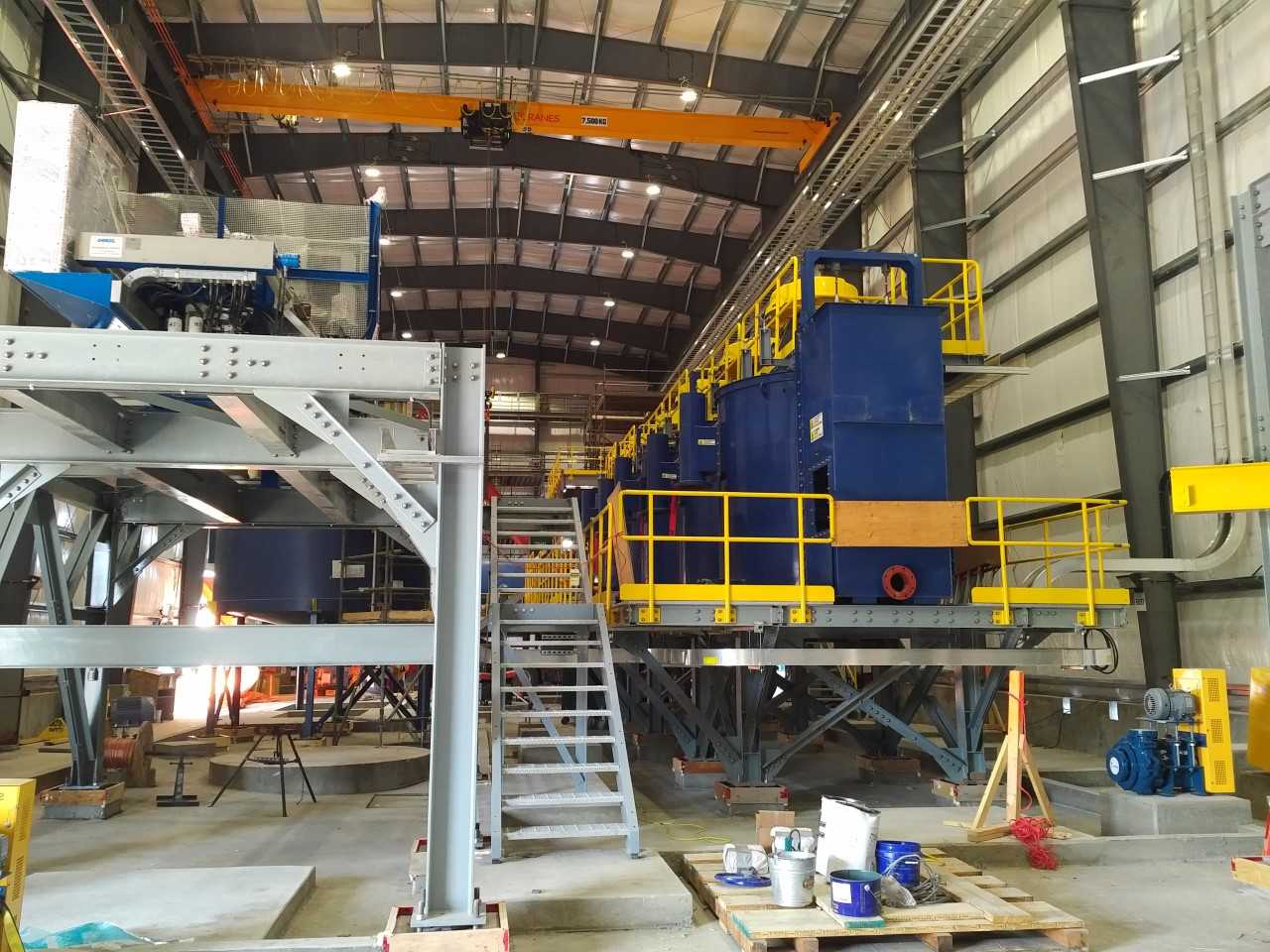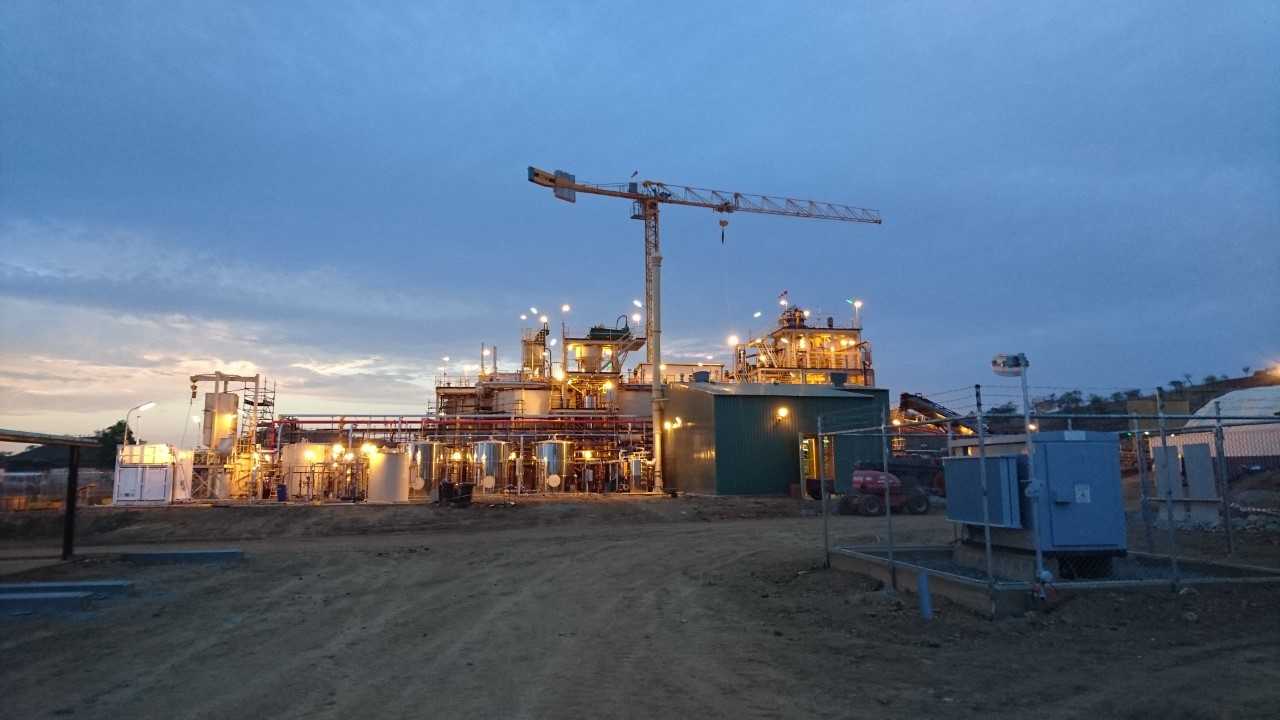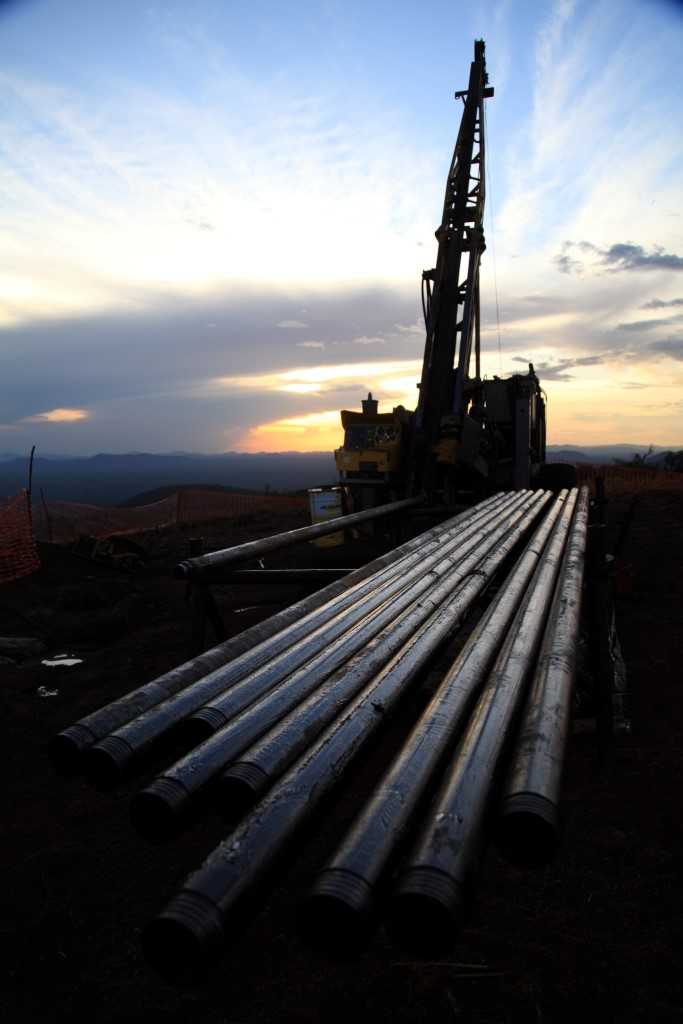It’s not about scoring the big win, it’s about not backing losers
A conversation with Michael Scherb, founder of private equity firm Appian Capital

Appian Capital Advisory founder & CEO Michael Scherb, a dual Austrian-Singaporean national, started his career structuring foreign investment into burgeoning China pre-supercycle before joining the mining team at JP Morgan Cazenove in London. He worked on deals as diverse as Rio Tinto’s $153 billion 2008 defence against a hostile BHP, a $1 billion Istanbul gold mining IPO, yearly strategy presentations for the Board of Xstrata, M&A for France’s Areva in Africa and a bond offering for Russian diamond giant Alrosa amongst many others. He founded Appian in 2014.
In 2014, Private Equity firm Appian Capital closed its first fund, taking in $375m from over $1.2bn of interest, focusing on the metals and mining sector.
In just 4 years, Appian has already overseen five mines into production while seven out of eight Appian investments, spanning three continents and a range of commodities, will be in production within the next 18-24 months.
Appian also announced at the end of March the sale of one of its assets – Brazil’s Avanco Resources – in a deal worth $350m to Oz Minerals, which marks the Fund’s second successful exit.
MINING.com caught up with Michael W. Scherb, Founder and CEO, to discuss the state of Private Equity in the mining industry, his investment philosophy, the portfolio and what the future holds for Appian.
You’ve packed a lot into the past few years, give us an update on Appian as an organization.
We have been cautious and measured in building the organization.
We are now 23 people overseeing 1,600 individuals in 8 portfolio companies with offices in Vancouver, Lima, Perth, and a Johannesburg presence to complement our London head office. We aim to hire the absolute best people in each discipline, and the individuals in our team are really the lifeblood and embody the culture and vision established when the firm was founded.
How would you summarise your investment philosophy?
Long term value investing, with a unique focus on technical arbitrage in the cyclical metals and mining sector. And by arbitrage, I mean the asymmetry of information that our team analyzes and prices in terms of risk.
In the Private Equity space, metals & mining is dwarfed by oil & gas investment. Why do you think this is?
Mining PE is in a similar space to what Oil and Gas PE was a couple decades ago. What the industry needs is a few major players to prove that the model works, and that mining PE can become a viable asset class from an investor’s perspective and that means consistency in deliverability of returns.
When we were raising capital, even generalist Private Equity funds became curious about mining. Some of the big PE names realised that there could be some unique alpha in mining, only to say, “well, traditional PE principles don’t apply and while I see the reward potential, there are some elements of risk that require a risk analysis based on experience and technical skill rather than numerical certainty” and simply disappearing.

Avanco’s processing plant in Carajas, Brazil.
Mining investment doesn’t always have to be taking a punt on a discovery or be a grassroots pure play. It can be structured in the same way that made Private Equity in the oil and gas sector so popular, that is, downside risk protected investments while keeping commodity price optionality.
When you structure it appropriately, you can invest into projects where it’s very difficult to lose money and still maintain upside potential. If I look across our portfolio, I find it very difficult for us to lose capital for our investors. Once investors realise that there is a model in the sector which offers downside protection, stable returns while keeping upside optionality, PE in mining should become an asset class.
In mining, however, people are far too focused on what they can make rather than what they can lose, to make that happen just yet.
You’ve talked about the need for second level thinking in mining. What does this mean?
Howard Marks, the head of Oaktree wrote a great book on investing which encourages second level thinking, i.e not just “supply/demand fundamentals look attractive on copper so let’s invest,” but if it looks attractive, how does this affect the psychology of the industry, including other investors, major mining companies and others.
What will this group decision making have on future investment and supply and how should we adjust our exit timing and investment strategy accordingly?
Unfortunately, or fortunately if you are a long-term value investor, first level thinking prevails, in this industry we all love.
Why do you think PE is a better form for investing in mining?
Private Equity is kind of a misnomer – private specialist capital is probably a more descriptive term.
Traditional Private Equity principles don’t apply to mining, however, long-term value investing principles do.
Traditional Private Equity principles don’t apply to mining, however, long-term value investing principles do.
And by long-term value investing, I mean through-the-cycle thinking.
Mining is the perfect industry for applying long-term value investing principles because it’s so cyclical, and you let the industry create the entry and exit windows for you through its volatility and irrationality.
All you need is patient capital, which the industry never had before, and which is why we’re a 10-12 year fund. Investors are getting shorter and shorter in terms of focus and you’re going to have more frequent and shorter cycles. So in 10-15 years we expect probably 2-3 mini-cycles which is enough time for us to enter and exit our investments.
The great thing about active investing, and why I greatly prefer the Private Equity model to the liquid investing approach is that you can work with management teams to tangibly create value rather than being passive and waiting for the market to price your investment correctly. Active management relies on exploiting mispricing within the market, which means that the determination of value is of critical importance.
Long term capital is the ultimate foil to irrational markets – as Keynes summarised it best, “The market can remain irrational longer than you can remain solvent!”
Tell us more about the problem of short term thinking vis-à-vis cycles in mining sector.
A common mistake amongst investors is to be overly geared to the macro exposure of a commodity. Appian targets defensive assets which are able to generate cash flow regardless of commodity prices due to their low operating cost positions and therefore ability to attain financing and remain insulated from the swings of macro movements. While we certainly have guiding macro beliefs, we are fundamental bottom-up investors.
Overall, our approach is based on the idea that the world seems to be getting shorter and shorter term in its approach. Take the seemingly never-ending and condensed political cycles or the instant media approach or the incessant desire, and attainability, for instant gratification. The average holding period of a stock on the NYSE is currently 8 months, down 91% from a high of 8 years in 1954, while the average CEO tenure has decreased 60% in 50 years from 12 years to 5.
Society has changed enormously in the recent past and the pace of change has accelerated with an impact on financial markets and what I believe will lead to an increased frequency of shorter cycles.

Harte Gold’s processing plant, one of the companies in Appian’s Fund I portfolio.
The easiest way to combat this is with long term capital which is ideally suited to a long lead time cyclical industry such as mining.
I firmly believe that cycles are self-correcting, through supply & demand, over & under supply and spend. Ultimately, every decision has an element of human thought and decision making behind it, i.e. to invest in a new mine build or how much copper inventory to stockpile or order forward.
Human judgement is based on emotion, short term sentiment and incorrect information or interpretation of that information and as we know, people are emotional and inconsistent. Fundamentals underpin commodity prices of course, but those fundamentals are driven by human over or under reaction to specific inputs.
Most things appear to be cyclical – politics, business, economics, commodities, and some of the greatest opportunities in investing reveal themselves when other investors or the market forget this.
I think of the mining sector and commodity prices as a pendulum on a clock, swinging between euphoria and desperation, always moving in one direction or the other, but never staying still or in equilibrium. Once this is known, you can spend your time on more applicable questions such as – how far the pendulum will swing, when the pendulum will begin its swing back and how far it will swing in the other direction.
How does Appian measure and manage risk?
Firstly, we don’t outsource our technical diligence and everyone in the firm cuts a cheque into every deal that we do. We identify key risk areas through our very thorough investment process and a detailed assessment and vigorous debate ensues on those areas as we move through our due diligence process.
To give an idea of the rigour and scope of our DD process, last year we looked at 409 projects and made only 3 long term investments. For management, a partnership with us means we will be with that project long term and support it in a collaborative approach with capital, operating and financial skills and support it during the good times and challenging times.
It is clearly impossible to reduce risk to zero on every investment, particularly as you are dealing with future events, many of them unknown. I’ve found that the best way to mentally benchmark risk/reward is to run through the fan of outcomes and possibilities to provide a mental rough probability distribution of future outcomes.
It is also important to blend psychology with people’s perception of risk, particularly as risk perception is altered when market conditions are good or bad and sentiment makes its way into perception, i.e. in a bull market view on events is likely to be bullish biased alongside some slippage on risk perception. In fact, people start viewing risk as a good thing in bull markets mainly because the higher risk has been rewarded with higher returns just recently. This is of course inversely true in bear markets.
The other important point to consider is that the market isn’t a static playing field, rather it is constantly evolving based on investors’ shifting views on risk which in turn affects asset pricing and other areas. When everyone believes that an asset is very risky or complicated, the price reduces to a point where you are overly rewarded for the risk or complexity.
When everyone believes that an asset is very risky or complicated, the price reduces to a point where you are overly rewarded for the risk or complexity.
My strong view is that the path to consistent returns over the long term is based on effective risk mitigation rather than aggressive investing. I believe that over the life of Appian, our legacy will be determined by limiting the losses and zeroes rather than the greatness of our winners.
This doesn’t mean that we don’t take risk, but I would far rather our portfolio deliver some level of stable returns, “our base case,” on average back to our investors, limit the losses while hitting on a few upside scenarios which will increase overall returns, rather than have a couple home runs but several zeroes.
Walk us through the Fund I portfolio.
Well, we’ve had a lot of fun and have been busy these last 4 years. 7 out of 8 investments will be in production within the next 18-24 months, so our operational track record is pretty solid. We have two investments in Africa, where the IFC is our partner in both, 5 in Latin America and Harte Gold in Canada.

Roxgold processing plant for the Yaramoko gold mine in Burkina Faso.
Roxgold
Roxgold is the 100% owner of the producing underground Yaramoko gold mine on the Hounde Belt in Burkina Faso with an average reserve grade of 17.1g/t Au. The operation produces 125koz Au per annum at a first quartile cash cost of <US$500/oz. The upcoming expansion will allow them to become a 160koz producer and we are excited by the resource extensions at depth as we drilled a hole down 1,200m and the deposit remains open.
Harte Gold

Avanco’s Antas North copper-gold operation in Carajas, Brazil.
Harte Gold is focused on the development of the highly prospective Sugar Zone property, 80km east of the Hemlo Gold Camp in Ontario, Canada. The underground mine is currently under construction and as per the inaugural resource statement contains 714 koz Au grading 8.5g/t inferred and 761 koz Au grading 6.6g/t indicated, although the potential is huge. We believe strongly in the geological upside of this project and are bringing it into production this year. I am on the board of Harte Gold.
Avanco Resources

Drilling at Peak Resources’ Ngualla Project in Tanzania.
Avanco has accomplished its second year of commercial production at its wholly owned Antas North copper-gold operation in Carajas, Brazil, the 5th highest grade open pit copper mine globally. Additionally, Avanco owns two development-stage operations: the Pedra Branca copper-gold mine and the recently acquired CentroGold project. We recently accepted an offer from Oz Minerals to acquire the project.
Peak Resources
Peak Resources is the 100% owner of the BFS-stage Ngualla Project, one of the world’s largest and highest grade undeveloped rare earth assets in the world. Located in Tanzania, Ngualla is optimally positioned to capitalize on the surge in NdPr magnet materials driven by electric vehicle demand.
Private control base metals investments
We also acquired a private copper / gold project in Brazil which we are fast tracking to development as it is permitted and DFS ready, and we just signed another private control nickel sulphide with cobalt by-product asset in the region as well, with a view to creating scale as we have one management team, based in Belo Horizonte, overseeing both projects. These assets could be in production in the next 12 – 24 months, and we have set aside equity capital for that to happen.
In addition, we have 4 royalties and are seeking more scale on this side of the business.
I had thought Appian was an equity focused investor. It’s interesting that you are building a small royalty portfolio.
Yes, we’ve been quietly acquiring royalties, including producing ones, which offer our LPs a different value proposition.
How do you expect to finish Fund I in terms of allocation?
8 investments
Commodity break-down: Copper 51%, Gold 24%, Nickel 19%, Rare earth/moly/cobalt/platinum 6%
Geography break-down: Latin America 76%, Africa 14%, North America 10%
Years from production: average time is around 2 years (but we have gone 4 years out and also bought assets in production)
In terms of dollars invested, majority control projects represent 66% and significant minority represents 34%.
We are in the process of delivering on our promises to our investors.
When do you plan on announcing Fund II?
Well, I’m not really allowed to comment on that. We have a bit more to do on behalf of our investors for Fund I. I think it’s more important to make sure that the team is 100% focused on the investment mandate and finalising the operational plans for our control investments, which is actually nearly complete.
What are the size expectations?
A common mistake is to get too large too quickly, as the market opportunity will determine the size of the Fund, but our last two investments were north of $100m each so what is the minimum amount of investments required to have some levels of diversification? Probably 6-8.
{{ commodity.name }}
{{ post.title }}
{{ post.date }}


Comments